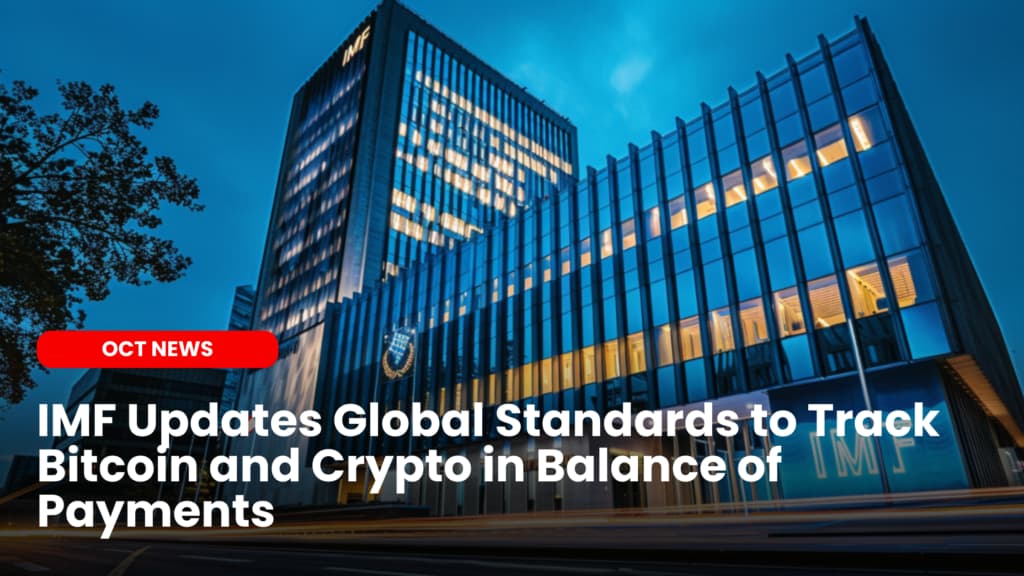
The International Monetary Fund (IMF) has integrated cryptocurrencies like Bitcoin into its global statistical framework for the first time.
Author: Sahil Thakur
Published On: Tue, 25 Mar 2025 07:46:48 GMT
The International Monetary Fund (IMF) has integrated cryptocurrencies like Bitcoin into its global statistical framework for the first time. On March 20, the IMF released the seventh edition of its Balance of Payments Manual (BPM7), introducing new classification rules for digital assets in cross-border economic activity.
The manual, developed with input from over 160 countries, provides central banks and finance ministries with a standardized way to record crypto transactions. Until now, these flows were inconsistently reported or omitted, creating data gaps and limiting visibility into crypto’s impact on the global economy.
While the update does not grant legal status to cryptocurrencies, it establishes accounting principles that align digital assets with traditional financial reporting.
BPM7 introduces a taxonomy for digital assets, categorizing them based on function, ownership, and liabilities. It groups them into three types:
The IMF also applies new reporting rules for crypto-related services. Staking, mining, and validation are now recorded under computer services trade, similar to cloud computing or software exports.
Countries that previously lacked the tools to measure crypto transactions now have an IMF-endorsed framework to follow. The impact will be most significant in economies where crypto plays a key role.
BPM7 provides these governments with consistent guidelines to track crypto’s macroeconomic role.
The IMF’s recognition of crypto comes as two nations—the U.S. and El Salvador—take contrasting approaches to Bitcoin in their financial strategies.
On March 6, President Donald Trump signed an executive order creating a U.S. strategic Bitcoin reserve. The federal government, which holds approximately 200,000 BTC from legal forfeitures, will now retain these assets instead of auctioning them. A separate U.S. Digital Asset Stockpile will manage seized cryptocurrencies like Ethereum and XRP.
Analysts see the move as a shift in the U.S. government’s stance. Nic Carter, a partner at Castle Island Ventures, noted that a Bitcoin reserve formalizes Bitcoin as a strategic global asset, much like gold.
Meanwhile, El Salvador continues accumulating Bitcoin, despite signing a $1.4 billion IMF agreement in December 2024. Since then, the country has added 159 BTC to its holdings, bringing its total to 6,125 BTC, worth $538 million.
The IMF urged El Salvador to limit public sector involvement in Bitcoin, but President Nayib Bukele has dismissed the idea of scaling back. On March 5, he reiterated that critics have predicted Bitcoin’s failure since 2021 and have been proven wrong.
Under the new BPM7 framework, Bitcoin reserves held by both countries will be tracked using standardized international reporting rules, marking a shift in how crypto fits into the global financial system.
The IMF’s decision to formally integrate crypto into global macroeconomic statistics signals a growing acceptance of digital assets. While the guidelines do not regulate or endorse crypto, they establish a foundation for measuring its cross-border impact.
As more countries implement BPM7 standards, Bitcoin’s role in international finance will become more transparent and comparable to traditional assets. Whether nations choose to accumulate or regulate, they will now have a consistent way to measure Bitcoin’s economic footprint on the global stage.
Real voices. Real reactions.
Our Crypto Talk is committed to unbiased, transparent, and true reporting to the best of our knowledge. This news article aims to provide accurate information in a timely manner. However, we advise the readers to verify facts independently and consult a professional before making any decisions based on the content since our sources could be wrong too. Check our Terms and conditions for more info.


Coinbase Listing Transparency Update Refines Asset Roadmap
India’s RBI Shows Strong Stance Against Crypto
Grayscale Launches Bittensor Trust Ahead Of TAO Halving
DeAgentAI ($AIA) Announces Token Migration to New Contracts
Coinbase Listing Transparency Update Refines Asset Roadmap
India’s RBI Shows Strong Stance Against Crypto
Grayscale Launches Bittensor Trust Ahead Of TAO Halving
DeAgentAI ($AIA) Announces Token Migration to New Contracts